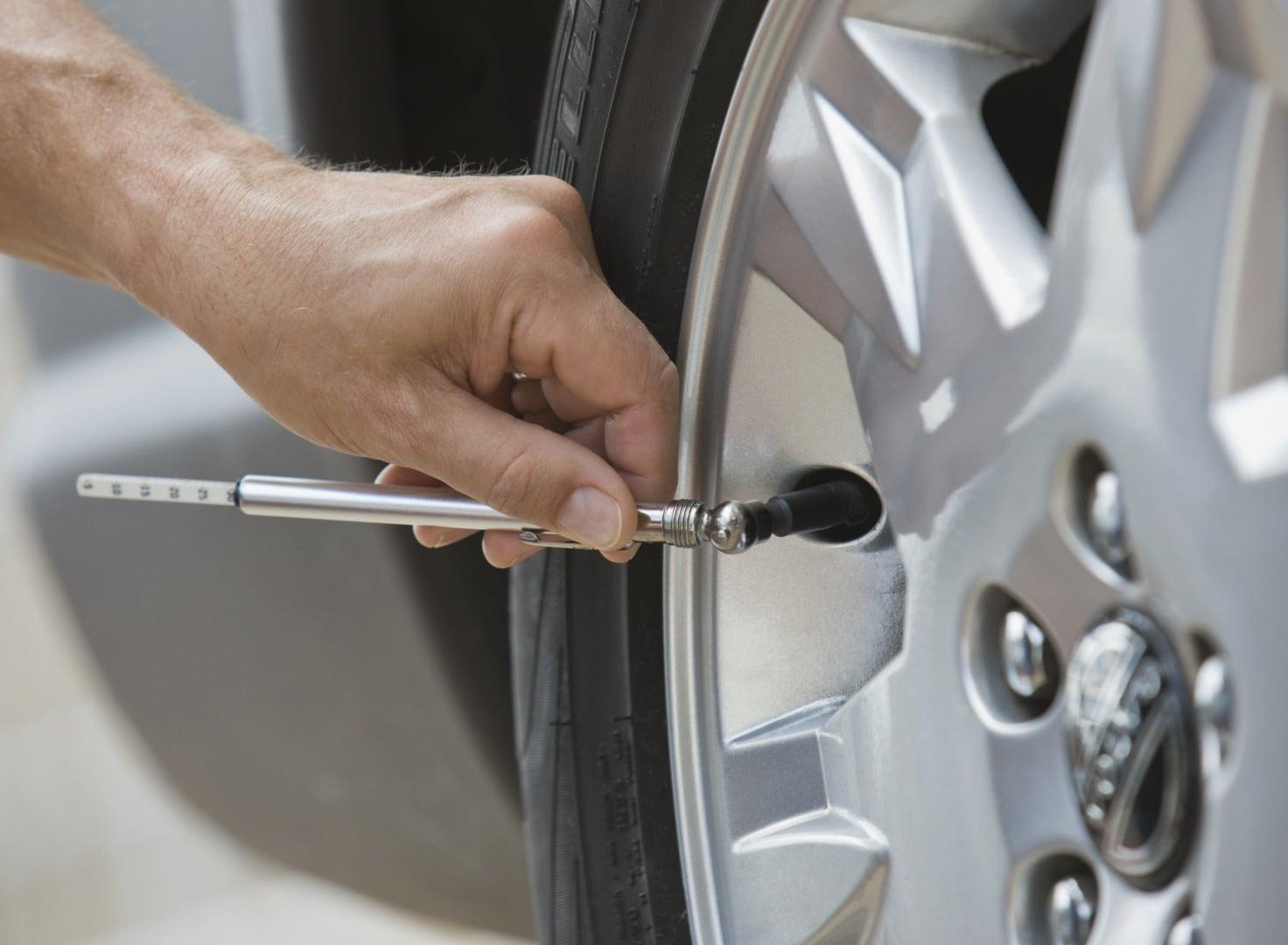No Spare? No Problem. Here's What Every Car Should Carry In Case Of A Flat
Something as simple as fixing a flat tire has gotten more challenging in recent years, but here’s what you need to know
Not long ago, virtually every single new car was sold with a spare tire, a jack and a small tool kit to allow owners to swap out a flat tire for the spare on the side of the road. That has changed over recent years, with many carmakers dropping the standard spare tire to cut costs and reduce vehicle weight to aid fuel economy. Often, cars that are sold without spare tires will instead come fitted with run-flat tires that can still be driven on for short distances when the tire is completely flat, or they're offered with a can of tire sealant and an air compressor that plugs into the 12V socket that you plug your phone charger into. This also applies for electric vehicles and internal combustion vehicles, naturally.
We've previously published everything you need to know about fixing a flat tire here, but this list applies to cars that are not equipped with a spare tire, though most of these items are still good to have in your car in case of emergency. If you get a flat and your car doesn't have a spare, it might be best to call a tow truck or roadside assistance if you have it depending on your comfort levels and safety; do not exit your car if you are in an unsafe spot on the road. If you're pulled over to a safe location, here are five things to keep in your car to help out in case of a flat tire emergency. Each of these items are readily available at hardware stores, automotive parts retailers, and at big-box retail stores around the country.
Basic Road Safety Kit
A basic safety kit may contain things like reflective hazard triangles and/or road flares to warn other motorists that there's a disabled car on the roadway, a head lamp or flashlight should issues arise at nighttime, and a pair of gloves to keep your hands safe and warm. The safety kit should also contain some basic tools that may come in handy should a roadside emergency occur.
Portable Air Compressor
A portable air compressor is a great tool in the event of a flat tire emergency. Some cars come equipped with them from the factory but many aren't, so make sure you know for certain what emergency devices you have in your car before an emergency arises. Portable air compressors usually plug into the 12V socket in your car and are reasonably compact and affordable to buy. That said, a tire that is punctured needs to be patched before it can be reinflated, which is where the third item on the list comes in handy.
Tire Sealant
Tire sealant is a valuable resource in a pinch, but not all flat tires can be fixed with tire sealant and a portable air compressor, though. If you get a pinch flat from hitting a bad pothole or driving over something at a weird angle that tears a hole in your tire sidewall, you're going to have to call roadside assistance. But, with most punctures like driving over a nail or something sharp, all you have to do is attach the sealant hose to the air valve and squirt the sealant into your tire. Once you fill it back up with air and drive around, the sealant moves inside the tire, finds the air leak, and seals it up allowing a temporary fix that should be enough to get you to a tire shop.
Tire Pressure Gauge
Modern cars are legally required to come equipped with tire pressure monitoring systems (TPMS) that will alert the driver should a tire lose air pressure. In new cars these systems are very accurate and precise, but older models may just alert you that one of your tires is low on air, so keeping a traditional tire pressure gauge in your car for emergencies is helpful. Most cars require owners to drive several miles before the onboard tire pressure monitors can get an accurate reading, which isn't always possible if you're trying to repair a flat on the side of the road. Some are bulkier than others, but you don't need a fancy one. A simple tire pressure gauge the size of a ballpoint pen will be all you need.
Drinking Water
Having a few bottles of clean drinking water stashed away in your car could be a lifesaver, especially if you're traveling anywhere remotely remote. Even if you have roadside assistance it may take them hours to reach you, so it's best to have some emergency resources in your car if you're traveling anywhere off the beaten path. Water is a priority over food, but it never hurts to have some emergency food resources, too.





